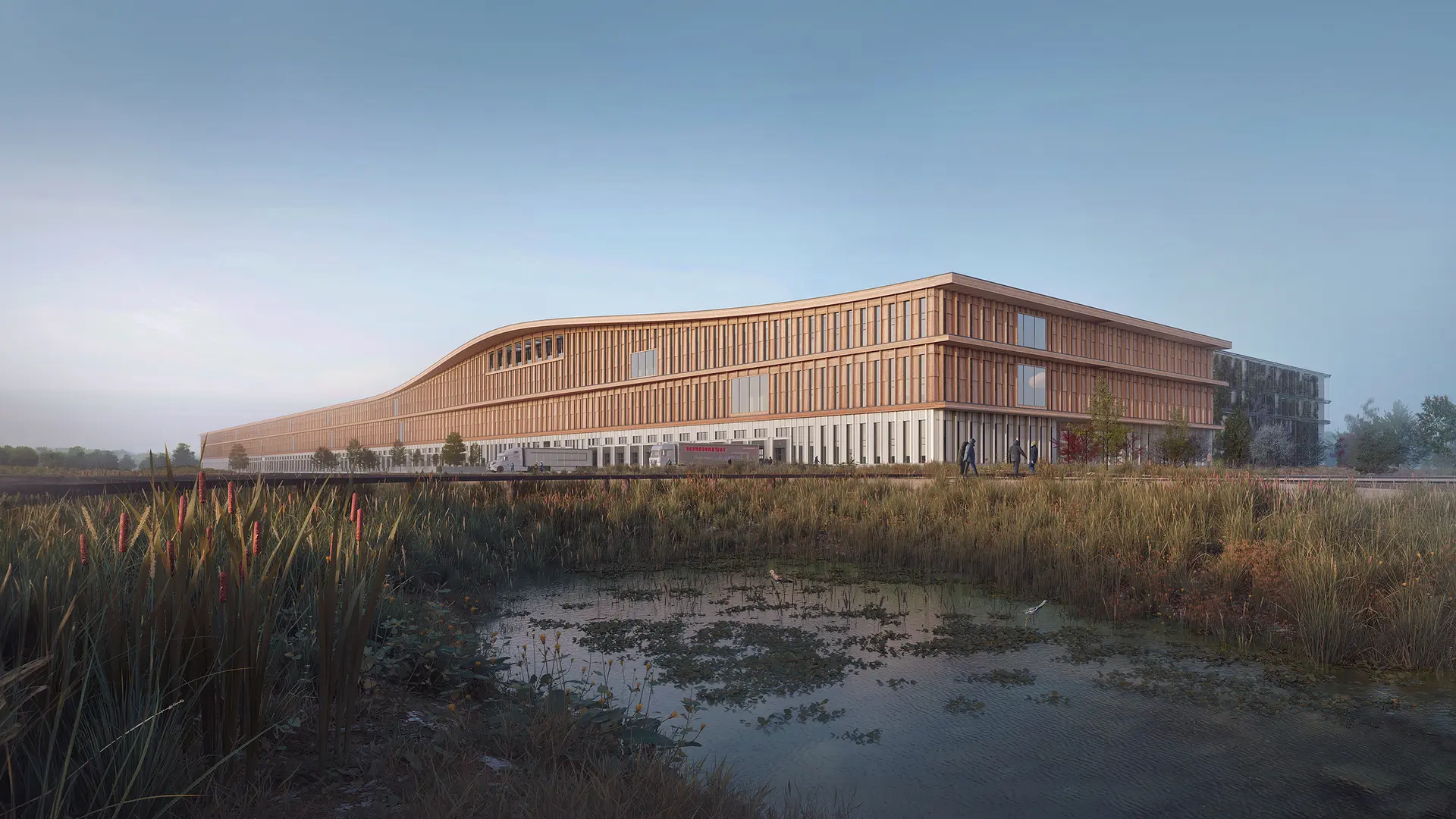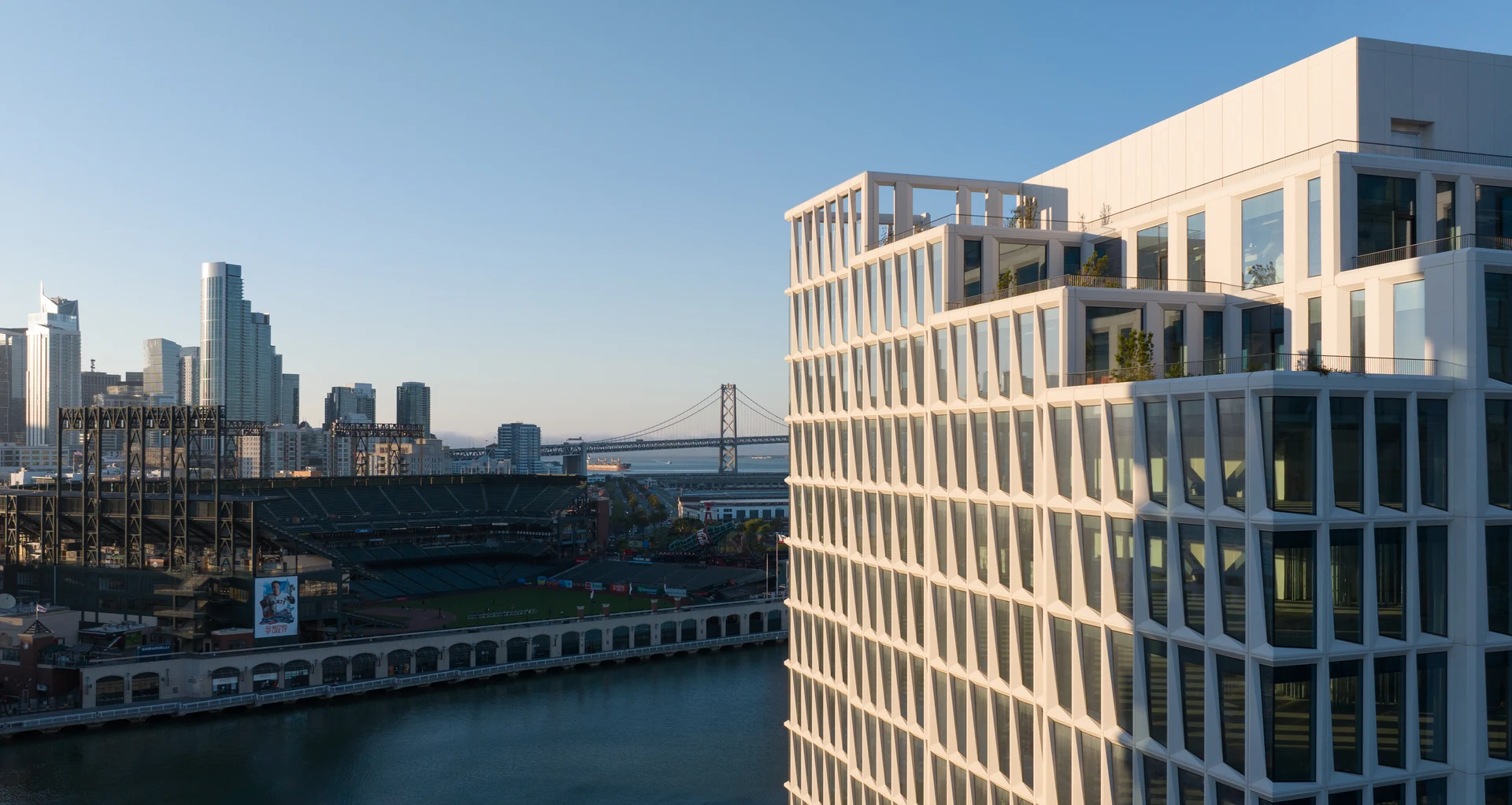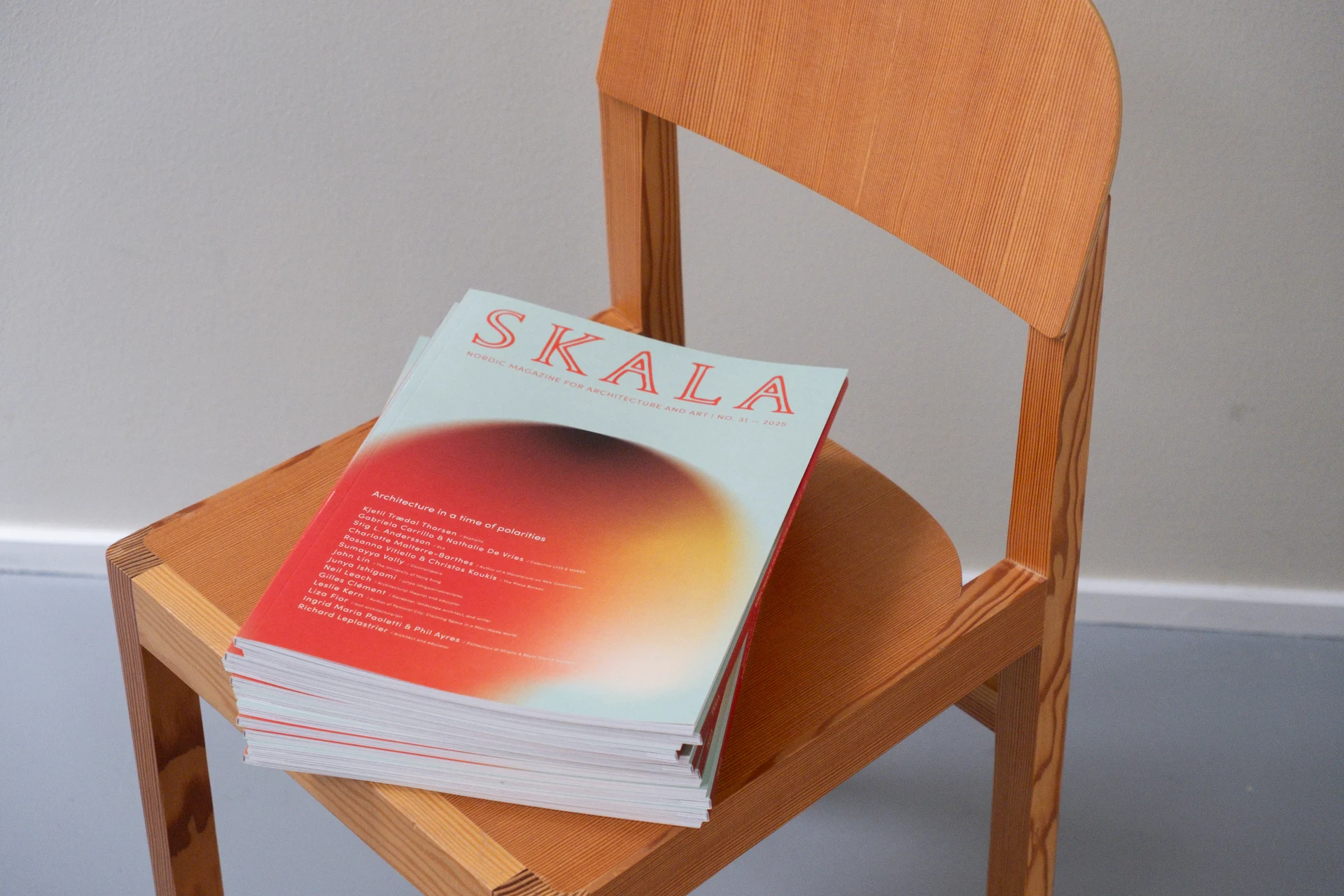We’re on a journey to redefine logistics with mass timber hub in the Netherlands

Fueled by a shared passion for emission reduction, fair workplaces, and circular design, our design for BESTSELLER’s logistics hub is maximizing resource use and minimizing waste.
Embracing biogenic materials and boosting biodiversity, more than 40% of the site is dedicated to its landscape, inspired by the surrounding island habitat.
Located in Lelystad, on the Dutch island of Flevopolder, BESTSELLER's 155,000 m²/1,668,400 ft² Logistics Center West (LCW) is a nod to the area’s unique topography. The structure will be built primarily of mass timber and other biogenic materials such as straw. The surrounding wetland and forest will be incorporated and enhanced, and a meadow cultivated on the roof, designed to increase the site biodiversity by 10%.
The logistics hub will include offices, shuttle storage, pallet shuttle, and a restaurant with a roof garden and terrace, providing ample space in the surrounding nature for employees and visitors.
Fostering ecological variety
To nurture the site’s biodiversity exclusively for nature’s gain, a constructed wetland habitat will envelop a significant portion of the site, fostering microhabitats through diverse native species and varied landscaping. The wetlands feature a boardwalk that serves both as a scenic route and an educational tool for employees, including plant identification, informative diagrams, and seating areas amidst nature. Other areas are off limits to people; nature-only areas designed to limit human impact. The wetland design blends with the surrounding environment, supporting varied topography to establish open water spaces, transitional zones, and damp meadows, making space for nature and its habitats.
Our commitment to preserving and enhancing the natural environment goes beyond aesthetics.
“Our commitment to preserving and enhancing the natural environment goes beyond aesthetics; it's about fostering ecological variety and creating a sustainable ecosystem. With over 40% of the site dedicated to its landscape, we are not just building a logistics center; we are nurturing an environment that thrives with diverse native species, wetlands, and green spaces," says Sonja Stockmarr, Global Design Director of Landscape.
"The constructed wetland habitat and the rooftop meadow are integral components designed to promote biodiversity. This intentional integration of nature into the workspace creates a unique atmosphere where employees can connect with the natural world, fostering well-being and productivity. However, crucial to its success, not every area is accessible to people to ensure nature can flourish unimpeded by human activity," Sonja Stockmarr continues.
LCW features an optimized irrigation system that promotes a healthy water ecology, safeguards against flooding, and upholds the site's responsibility to prevent contamination of the local water system. Additionally, roof-sourced stormwater can be efficiently recycled for internal building use.
Encompassing 30,000 m²/322,900 ft², the site’s roof features various planting beds, small fruit trees, and blooming bushes, providing a serene escape for employees while attracting and supporting various local species. This biodiverse space not only enhances the building's aesthetics but also absorbs CO2, filters air pollutants, and mitigates heat absorption, resulting in a more comfortable and sustainable environment. The garden's topography accommodates a network of trees and green pockets, offering shaded seating and scenic spots for outdoor gatherings.
Where nature and people thrive
The integration of nature into the workspace harmonizes indoor and outdoor elements, creating an atmosphere that prioritizes employee well-being. Abundant natural light floods the timber interior, invigorating the space and enhancing focus. Outside areas optimize the microclimate to notably extend the duration of outdoor comfort by over two months throughout both the spring and autumn seasons. The great swathes of area dedicated to nature help to ensure the urban heat island effect will not arise.
“The design of Logistics Centre West represents a fundamental change to the way we imagine how a logistics centre should look. It’s a result of a united client and consultancy team committed to creating a design that is visually stunning, carbon efficient and has a positive biodiverse impact,” says Eva Ravnborg, Country Market Director, Partner, Henning Larsen.
Logistics Center West is designed in collaboration with Ramboll, Denc and Pelecon.



